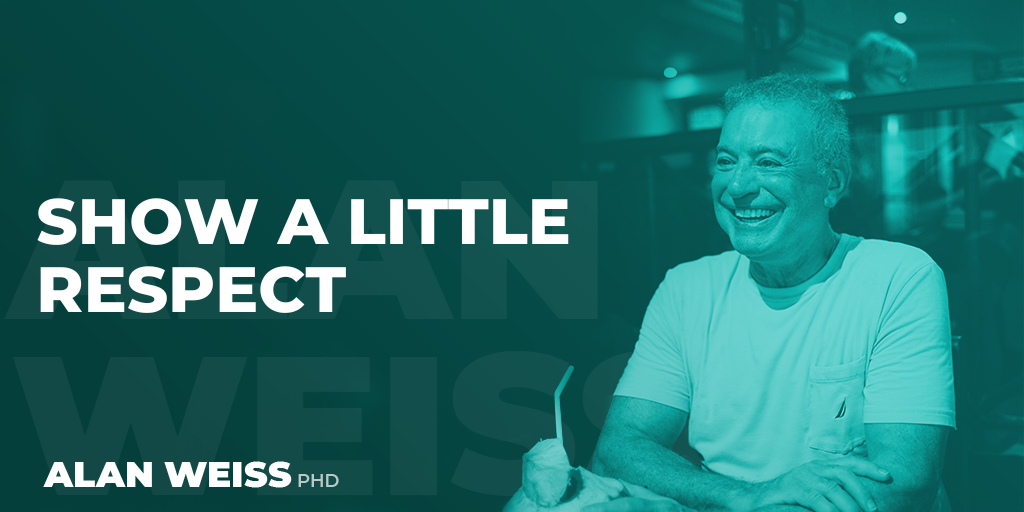Tell Me Where It Hurts
When you’re coaching people or simply observing clients, you’re well served never to assume someone else is “damaged” or malicious. We tend to make too many assumptions about others’ motives without any evidence.
There are four key vectors to consider when, in fact, people are being hurt. Develop evidence to support your conclusion so that you can properly help in each instance.
- Consciously hurting others. This may be through emotional manipulation, peer group humiliation, withholding important information, providing incorrect information, starting rumors, and so on. Passive/aggressive people deliberately hurt others, though seemingly unintentionally (though it’s highly intentional). Bullies (emotional, psychological, physical) try to hurt others because of their own perceived inferiority, attempting to lower others to their levels.
You must confront these acts with observed behavior and the ramifications of that behavior. If it continues unabated, it should be grounds for dismissal. I was the fourth in a line of coaches trying to prevent obscene workplace tirades and humiliation from an executive vice president whose division delivered large profits. He refused to stop his behavior or get counseling. I told the president that the entire workforce considered it HIS preferred behavior, and this man was his proxy, since the president refused to put a stop to it. A week later the vice president was fired. His division continued to produce large profits.
- Unconsciously hurting others. These people are generally oblivious to the world around them and/or totally self-absorbed. They are the people who speak loudly on the phone in public areas, use inappropriate language, demand attention at others’ expense (they monopolize the help in a restaurant), or drive at 20 miles an hour on a 45 mile-an-hour road because they are talking on the phone.
It usually helps to bring the behavior and its ramifications to the attention of the transgressors, since they are unaware of both what they’re doing and how it impacts others. “Why are you changing the temperature in the room when all the rest of us are comfortable, and you haven’t even asked us? Put on a sweater.” If they are apprised and refuse to change their behavior, then they enter category 1 above.
- Consciously hurting yourself. This can range from physically harming yourself (e.g., cutting) to emotional and psychological harm (e.g., constantly sacrificing personal objectives for others, denying yourself what is rightfully yours, and so on). This often stems from a need to punish, feeling alienated, and feeling unworthy.
In this case, people have to be encouraged to reveal their feelings of inferiority or lack of worth, or explore why they constantly accede to others because of intimidation or a false sense of protocol. Many people deliberately dress, use language, and comport themselves so as not to draw attention or praise. They are often afraid of exposing their own perceived ineptitude.
- Unconsciously hurting yourself. These are people with very low self-worth who “automatically” and consistently place themselves in inferior positions. They never try to “win” or to gain praise, or to stand out favorably in a crowd. When I once forced such a person to explain why she couldn’t speak up to a prospect who was asking reasonable questions, she said, “I guess I just can’t imagine why he’d listen to someone like me.”
There are people walking around believing inherently that they don’t deserve, don’t count, don’t merit any success and, if it comes, it was an accident, a stroke of luck. Their defeats and setbacks of course, are because of their own lack of talent. I’ve found that people in this category are carrying “baggage” and self-limiting beliefs that are never examined or even apparent. But they are guided by them nonetheless.
Examine why and how people are hurting and being hurt. Don’t assume it’s always the same reason or situation or solution. And it doesn’t hurt to ask this of yourself, as well.
© Alan Weiss 2012. All rights reserved.






Peter McLean
Brilliant post Alan!
I’ve seen these behaviours easily and quickly destroy a company/unit. Your solutions are spot on for heading off damage. I’ve also seen “leaders” refuse to deal with 1 or 2 – for fear of the results or fear of the people themselves. 3 or 4 leads to a sad loss of talent. Other than recognising and exploring 3 or 4, as you note, I wonder what other approaches you would take to improve their situations.
Thanks again for another insightful post.
Alan Weiss
I find it useful to determine exactly what I’m dealing with and confront it. As a consultant, it’s easier than as an internal executive. I don’t assume people are damaged, but if they are, something has to be done about it.
Morton
Alan
Insightful as usual. Wonderful stuff
Jeffrey Summers
Where does DASM fall?
Alan Weiss
Dumb-ass stupid management doesn’t look for cause, but rather blame, or tries to hide the adverse effects.
David Aron
Thank you for the wisdom, Alan. I’ve found that people in the last two conditions might operate in a situation specific mode… they feel that they’re competent and deserving in some conditions but don’t demonstrate that response in others. As you write, “determine exactly what I’m dealing with and confront it.” Let them know that they are the same person who has achieved in other contexts, and that they deserve their rewards in others too.